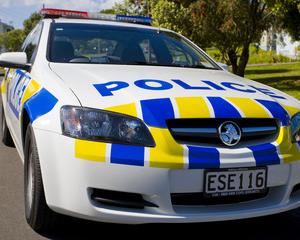Corrections and police are in the dark about how much money they spend transporting Otago Corrections Facility prisoners to and from courts.
In the 2011-12 financial year, 1834 prisoners were transported between the Milburn jail and courts throughout the region.
Police estimated they were involved in about 500 such trips annually.
But neither the Department of Corrections nor the New Zealand Police could tell the Otago Daily Times how much those trips cost.
The organisations declined to answer questions under the Official Information Act, because they did not know or could not easily find out.
Corrections said ''the department cannot readily extract from our electronic records the costs or budgets relating to the transportation of prisoners between OCF and courts from our wider offender transport costs''.
''In order to identify this type of specific information, we would be required to manually review a large number of files ... we do not consider that this would be an appropriate use of our publicly funded resources,'' it said.
Subsequently asked what the wider offender transport costs were, Corrections said it would respond under the OIA by August 21.
Corrections and Police Minister Anne Tolley last week said prisoner transportation costs nationally totalled ''just under'' $6 million in the past year.
Police said costs relating to OCF prisoner transportation were included in the total operational budget, and not separated out.
''Therefore, we are unable to provide you with the exact cost for police of transporting OCF prisoners to and from courts without substantial research.''
Neither police nor Corrections could say how many trips were made between the jail and courts in Dunedin, Alexandra, Oamaru and Balclutha last year.
''We cannot provide you with the figures for 2012 but we estimate that police are involved in approximately 500 trips per year,'' police said.
Corrections said ''we are unable to provide the number of discrete transportation events''.
A minimum of two police staff had to accompany prisoners being transported between jail and courts. More were assigned if a prisoner was deemed high risk.
The departments did not know how much money they would save once an audiovisual link (AVL) system was installed at the Dunedin court and Milburn jail in February 2015. It would eliminate the need for some prisoners to appear in court for their cases to proceed.
''While AVL will certainly reduce costs, the exact level to which costs reduce will be influenced by the number of people that continue to require transport,'' police said.
Corrections estimated the technology could reduce costs by between 50% and 70% nationwide.
But it would not disclose what that reduction was in monetary terms.
Its estimate came from a ''cost saving analysis'' based on 2010 court hearings, which took into account offender transport costs to and from courts ''and a number of other variables''.
Corrections also deferred its response to a subsequent question about the 2010 costs.
Labour Party police and corrections spokesman Kris Faafoi said it was ''nonsense'' for the Government to herald cost savings through the implementation of an audiovisual link system without knowing how much prisoner transportation cost at present and, therefore, how much would be saved.
The new technology would be helpful, but it was ''not good enough'' for the Government to be vague in respect of taxpayers' money, Mr Faafoi said.
''To not have those numbers seems a bit dumb. They've got to make a business case for it and they are paying people a lot of money to make sure the figures are appropriate and will save enough money for the effort,'' he said.
Mrs Tolley said the main benefits of the initiative were increased safety and security for the public and for police and Corrections staff.
''The roll-out of AVL will have a significant effect on costs, as many prisoners won't have to be transported. But it has to be remembered that judges will have the final say on whether prisoners have to appear in court [and therefore be transported], or if they can appear via AVL.
''Also, prisoners have different security classifications, so future costs would differ depending on which prisoners are appearing. And, of course, we don't have information on which prisoners will appear and what classification they will have,'' she said.
In June, Mrs Tolley and Courts Minister Chester Borrows announced a $27.8 million roll-out of the audiovisual link system in prisons and courts nationwide.
They said the system had already saved Corrections, police and court staff time and money but did not quantify how much.
The system was expected to be used in the majority of the 40,000-odd remand court appearance in New Zealand each year.
The unknowns
Four questions put to the Department of Corrections and New Zealand Police
• How much had they spent transporting OCF prisoners to and from courts since the jail opened in 2007? - Don't know*
• The annual budget for transporting OCF prisoners to and from courts? - Don't know*
• The cost of transporting OCF prisoners to and from courts in 2012? - Don't know*
• The cost of transporting OCF prisoners to and from the Dunedin court in 2012? - Don't know*
*Costs will not be known unless a large number of files are manually reviewed, through substantial collation and research, Corrections and police say.


